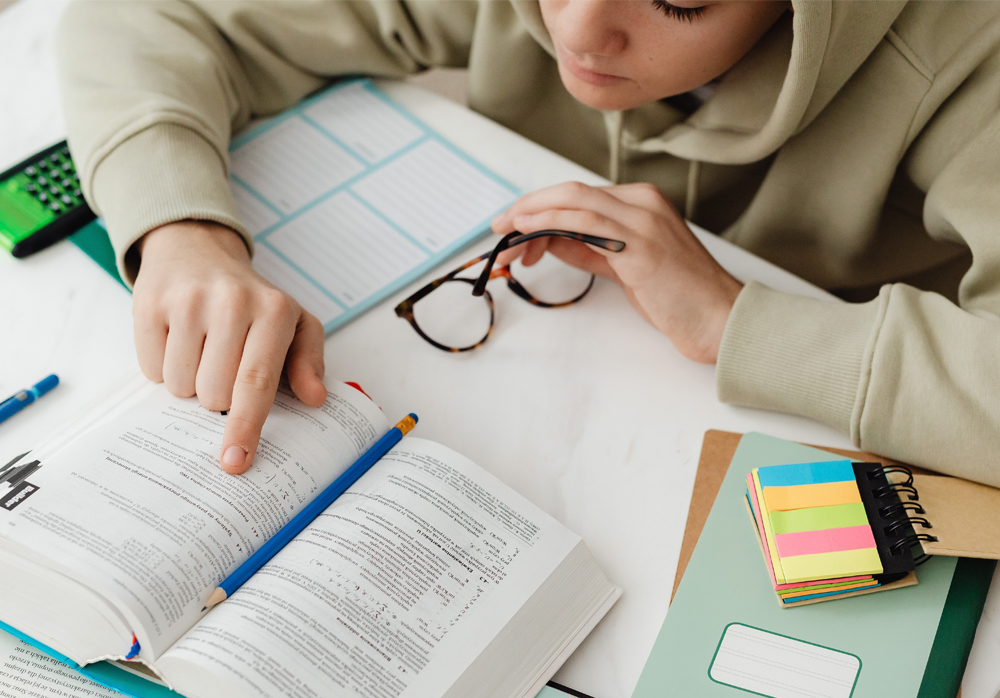
I like to ask students, “What does a student do?” Most commonly, they reply, “Students study. Students learn.” Then I like to ask what activities students must do to make that learning happen. In other words, what are the habits of a successful student?
I use a framework of five categories to help students address the varied aspects of student life that need to be part of their routine: workspace management, task management, reading practices, note-taking practices, and review practices. Though there is much to say about each of these categories, let me take a few moments to highlight some of the most important points.
Workspace Management
When thinking about setting up a workspace, two components seem so obvious that we may overlook them. The gear, ranging from large furniture items to books to pencils is, of course, critical. However, sitting in the middle of it all is the student and the technology. A beautifully equipped workspace is only going to be a workspace if we have a student who is rested, fed, and ready to attend. Work is only going to be accomplished in that space if the student is committed to remaining on task. The technology needed to complete schoolwork also offers infinite distractions. How often we have heard the despairing comment, “…but I studied for hours!” Students must be challenged to identify the temptations that divert them from their work and then to develop strategies for successfully managing those distractions. One of my favorites is inspired by a sign we often see on highways, “Text stop in 30 miles.” In other words, put away your phone. Plan to check it and respond to texts or emails at set points during the day, rather than the moment they show up in an inbox.
Task Management
Task management is an extremely popular topic addressed by a myriad of helpful books and methods. I encourage students to simply make the distinction between “due” and “to do.” They can use a calendar to mark what is “due” (scheduled commitments and assignments with a fixed due date and time) and use lists to record what “to do.” A planner is simply a tool that allows us to capture items in both categories in one place. Students need a schedule that includes fixed commitments like classes and sports along with blocks of time to tackle the to-do’s related to each.
Reading and Note-taking
Reading and note-taking practices are intertwined habits. We often talk about active reading, which can be cultivated by even the simplest note-taking during reading. Students often underestimate the value and overestimate the task of note-taking during reading. Teachers can help students learn how to tackle note-taking while reading fiction and nonfiction since each requires a different approach. For example, when reading a science text, students may choose to define terms and summarize concepts found in the reading. When reading a story, students could summarize plot development but should also identify insights into characters, symbols and themes.
Review
Students also underestimate the value of review, often waiting until just before a test. However, if students incorporate review into their regular work time for each course (test or no test), the benefits can be transformational! That review time becomes an opportunity to reflect, polish and delight in learning. Consider using the system of review taught in the Cornell Way, which is simple and shorter than students expect! Take 10 minutes to read over notes as soon as possible after class and clarify any questions. Review the notes again within 24 hours—again, spending only 5–10 minutes. Finally, revisit the notes within one week to test how much you remember. Even if students do not structure their notes according to the Cornell method, the review strategy is very effective. Students can edit and rewrite notes as they revisit them.
We come by habits in two ways. Habits of a successful student are no different. Some just happen; others need to be developed and built into the life of a student. For this reason, I encourage students to talk with their families, their teachers and their peers about habits they already practice or those they need to cultivate. These conversations can provide students powerful insight into which habits they need to develop and how they can effectively establish and sustain those habits.
Looking for more on this topic?
Five Ideas for Boosting Productivity
Five ways to help your teens develop healthy technology habits
Need a study break? Three Rejuvenating Ideas